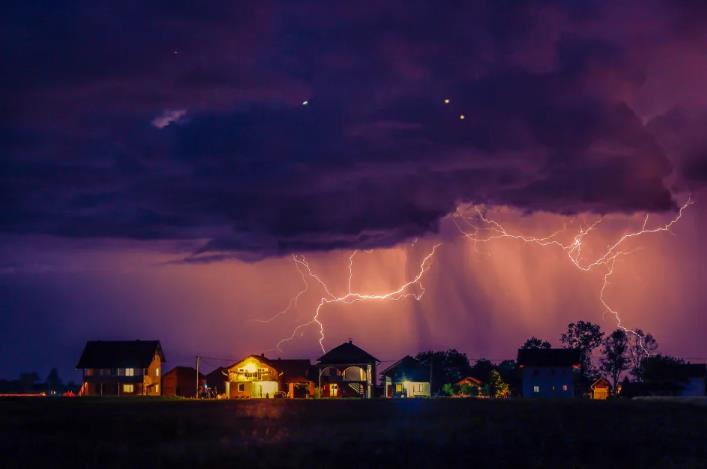Understanding the Threats
Hurricanes are powerful systems characterized by strong winds, heavy rains, and the potential for catastrophic flooding. The intensity of these storms can vary, but even weaker hurricanes can cause significant damage, especially through storm surges and prolonged rainfall. Understanding the specific threats posed by hurricanes is the first step in effective preparation.
1. High Winds One of the most immediate dangers of a hurricane is the high wind speeds, which can reach up to 155 mph in the most severe storms. These winds can rip off roofs, break windows, uproot trees, and turn debris into dangerous projectiles. Buildings that are not structurally sound or properly secured may suffer extensive damage.
2. Storm Surges A storm surge is the abnormal rise in seawater level during a hurricane, caused primarily by the storm’s winds pushing water toward the shore. This surge can lead to flooding, especially in coastal areas, and is often the deadliest aspect of a hurricane. Low-lying areas are particularly vulnerable, with the potential for water levels to rise several feet, inundating homes, roads, and entire communities.
3. Flooding Flooding from hurricanes can occur in both coastal and inland areas, depending on the storm’s path and intensity. Even after the storm has passed, rivers and lakes can overflow, causing widespread flooding. Flash floods, in particular, can be extremely dangerous, occurring with little warning and sweeping away anything in their path.
Pre-Hurricane Preparations
Preparation is key to minimizing the impact of a hurricane. Here are essential steps to take before a storm hits:
1. Develop an Emergency Plan Every household should have a well-thought-out emergency plan. This includes identifying a safe room or shelter, knowing evacuation routes, and having a communication plan to stay in touch with family members. Practice this plan regularly to ensure everyone knows what to do when a hurricane is imminent.
2. Assemble an Emergency Kit Prepare an emergency kit with essential supplies to last at least 72 hours. This should include water (one gallon per person per day), non-perishable food, medications, a first-aid kit, flashlights, batteries, a battery-powered radio, and personal hygiene items. Don’t forget important documents like identification, insurance policies, and emergency contact numbers.
3. Secure Your Home To protect your property, take steps to secure your home. Install storm shutters or board up windows with plywood to protect against flying debris. Reinforce doors, especially garage doors, which are particularly vulnerable to wind damage. Trim trees and shrubs to minimize the risk of branches falling on your home. Ensure that your roof is in good condition and that gutters and drains are clear to handle heavy rainfall.
4. Stay Informed Monitor weather forecasts and heed warnings from local authorities. Sign up for emergency alerts, and keep a battery-powered or hand-crank radio on hand in case of power outages. Understanding the storm’s track, intensity, and potential impact will help you make informed decisions about when to evacuate or hunker down.
During the Storm
When a hurricane is bearing down on your area, it’s crucial to stay calm and follow safety protocols:
1. Follow Evacuation Orders If local authorities issue an evacuation order, do not hesitate to leave. Evacuate early to avoid traffic and worsening weather conditions. Follow the designated evacuation routes, and do not take shortcuts, as these might lead you into dangerous areas.
2. Shelter in Place If you’re not in an evacuation zone, take shelter in a small, windowless room on the lowest level of your home. Stay away from windows and exterior doors, and keep your emergency kit nearby. If flooding occurs, move to higher ground but avoid taking refuge in attics without an escape route.
3. Stay Connected Use your battery-powered radio to stay informed about the storm’s progress and any new instructions from local authorities. Limit phone use to emergencies to preserve battery life and keep lines open for critical communication.
Post-Hurricane Safety
Even after the hurricane has passed, dangers can remain. Here’s how to stay safe in the aftermath:
1. Wait for the All-Clear Do not venture outside until authorities have declared it safe to do so. Hazards such as downed power lines, flooded roads, and unstable structures may still pose risks.
2. Assess and Document Damage Once it’s safe, carefully inspect your home for damage. Document everything with photos or videos for insurance claims. Avoid using electrical appliances until they’ve been inspected, and do not wade through floodwaters, which may be contaminated or hide sharp objects.
3. Seek Assistance If your home is damaged or you are in need of assistance, contact local relief organizations, shelters, or government services. Many communities have resources available to help those affected by hurricanes, including temporary housing, food, and medical care.
4. Stay Healthy In the days following a hurricane, health risks can increase due to contaminated water, spoiled food, and heat exposure. Drink only bottled or boiled water, and avoid eating perishable foods that may have been contaminated or spoiled due to power outages. Be mindful of heat exhaustion, particularly in the absence of air conditioning.
Conclusion
Hurricane season requires vigilance, preparation, and a clear plan of action to ensure safety. By understanding the risks and taking proactive measures before, during, and after the storm, you can protect yourself and your loved ones from the potential dangers of these powerful natural events. Remember, staying informed and following the guidance of local authorities is key to navigating hurricane season safely.
